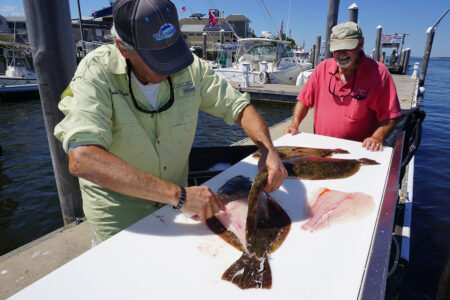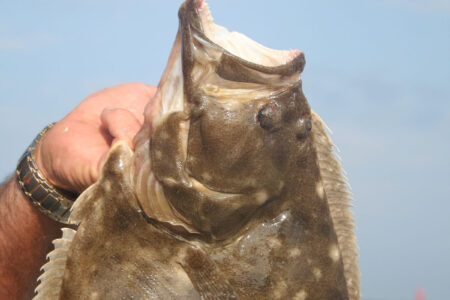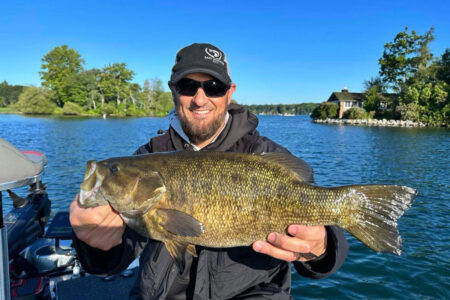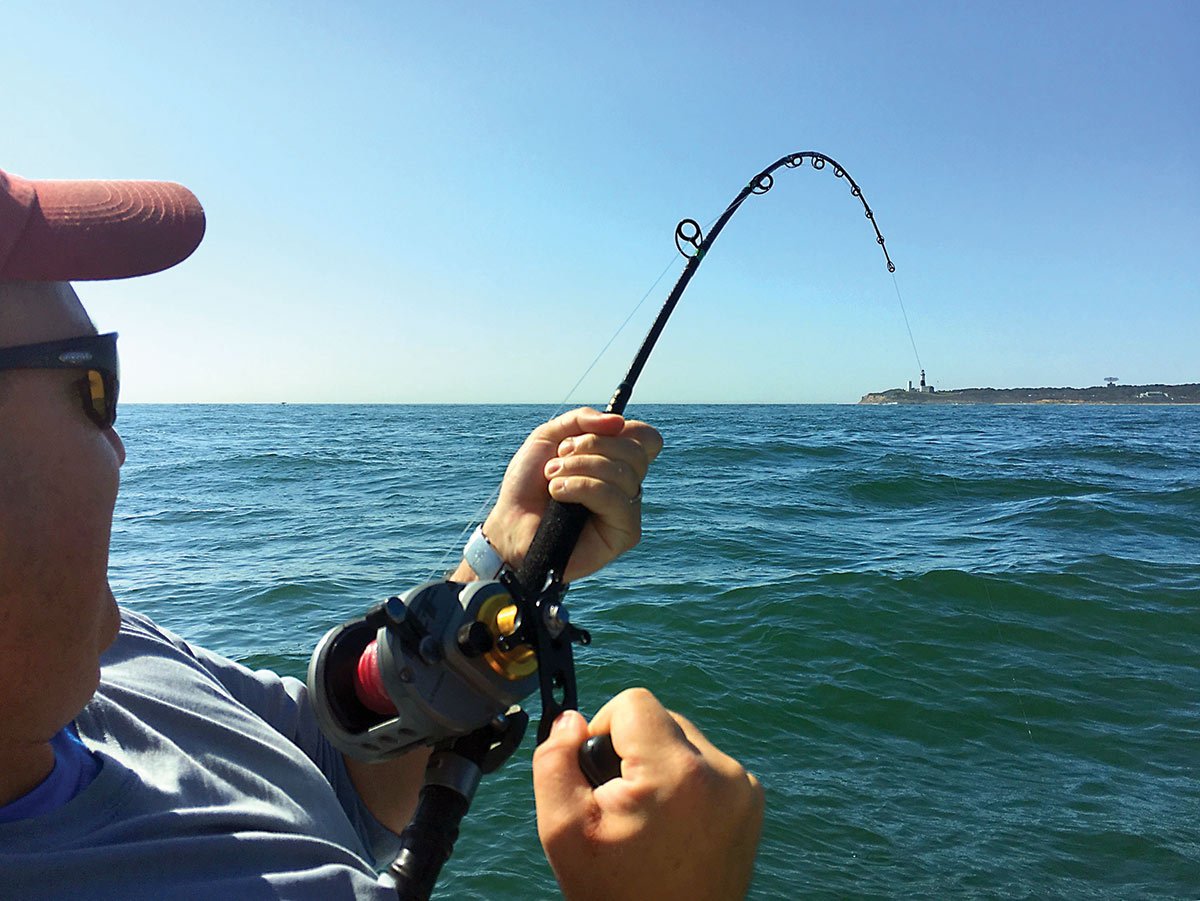
Montauk’s striper-rich waters have the potential to yield some of the best day or night bass action on the coast.
I have been striped bass fishing in earnest since the memorable striped bass “comeback” that began during the 1990s in New York, when a moratorium followed by strict size and bag limits resulted in an explosion in striped bass stocks. Most of my striper fishing has taken place in western Long Island Sound and at Montauk. In the Sound I have fished mainly on private boats, while in Montauk it has been largely on party and charter boats. During those years I have picked up many valuable tips that have allowed me to consistently score with some huge stripers, and I would like to share some with you.
Montauk is often referred to as the “Striped Bass Capitol of the World.” The Point wasn’t simply handed that designation by some outdoor writer or by chance. It had to be earned and truly deserves that label. Think of an underwater location that juts 80 miles out into the Atlantic, intersecting with the striper’s main migratory highway and featuresstrong currents, boulders, well defined rips and other submerged obstacles—areas where striped bass of all sizes love to lurk and target their prey, day and night.
Diamond Jigging
One of the best ways to cash in on bass in Montauk during the daylight hours is by diamond jigging. Many times you see fish busting on the surface, usually around dawn and dusk, but sometimes even at midday. Just remember that the truly large bass are found prowling close to the bottom, just waiting for unsuspecting baitfish to come along. Begin by underhand casting a 4- to 8-ounce jig near the action, but do not begin your retrieve until the jig has hit bottom and only then begin a slow, steady retrieve of about 10 cranks on your reel. If you don’t get a hit, free-spool the jig back to the bottom and repeat.
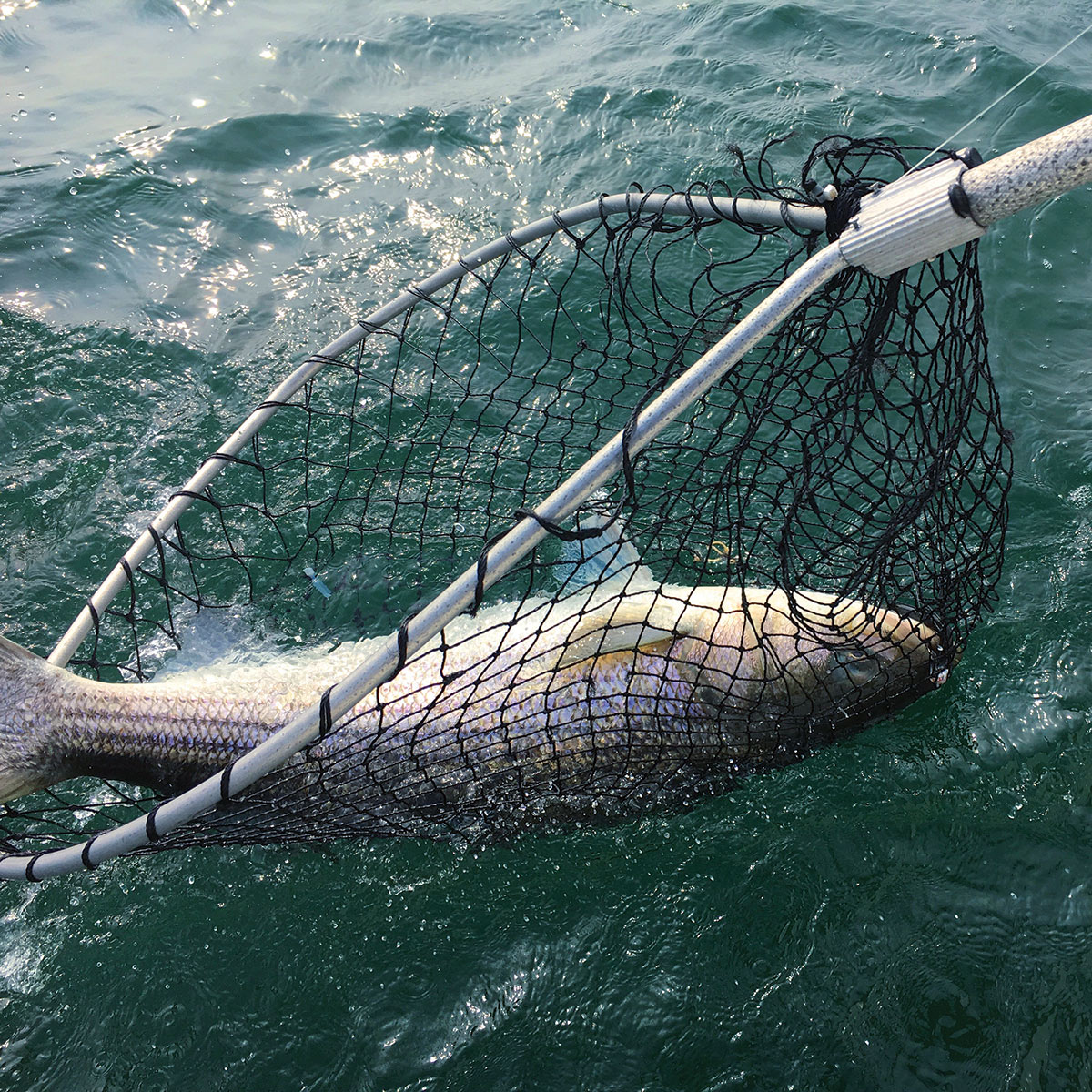
There are two important things to keep in mind. The first is to reel slowly because large bass tend to be lazy. The second is not to utilize any sweeping motion with the rod because you want your jig to simply resemble a sand eel or other baitfish, morsels that linesiders cannot resist. Simply reel the jig in. I have found that gold-colored jigs work best on cloudy days, while silver is the go-to on sunny days. Other times, hammered jigs may work best versus plain ones so be prepared to experiment with both until you hit on the right formulas, which can change day to day.
Live Bait
Okay, you’ve jigged and caught some smaller bass and released them. Now, you want to nail a “cow” of 30 pounds or better. In that case, nothing beats live eels or live spot; the latter pretty expensive and used mainly during the daylight hours. While eeling, unless you are on a private or charter boat and slow trolling, or stemming the tide, you will be drifting. In this case you want to utilize a three-way swivel and braided line of 50-pound test or heavier with an approximate topshot of equivalent pound test monofilament that can be attached with an Albright or other knot. I prefer the Albright because it flows freely through the rod’s guides. Mono isn’t as good when eeling because it is more difficult to feel when a fish picks up your eel due to the stretch, but utilizing a mono topshot will give you just the right amount of stretch so the hook doesn’t pull. Mono also provides better abrasion resistance than braid. This will be tied to one portion of the three-way, with a sinker to another portion. For the sinker you can use either a monofilament loop or a clip. I prefer the clip because I then know pretty much exactly how far off of the bottom my rig is. If you use a loop, you want to tie the loop with mono that’s lighter than your main line because if you do get hung up, all you lose is the sinker. The idea should be to keep your rig as close to the bottom as possible, but without dragging the sinker on the bottom. It is important to use the lightest weight sinker possible, with minimal scope in the line. If the sinker is too light you will wind up tangling other anglers and if too heavy, the fish will probably feel it and drop the eel. To this setup add an 8- to 10-foot leader of either mono or fluorocarbon, with a 7/0 Owner Needle Point or Gamakatsuoctopus style hook. Or, if you prefer, you can use the same size circle hook.
This setup will be pretty much the same whether you are fishing on a private, charter (They will supply everything.) or party boat. If you are fishing on a charter or private boat the technique might be a bit different, with a longer leader used from the sinker to the hook, but everything else is pretty much the same. Rental outfits are available on party boats. I prefer my own gear, which consists of reels like the Accurate 400 Boss Extreme and the Shimano Talica 10 attached to a Shimano Terez 7-foot medium-heavy action rod. These combos are relatively light in weight but pack a powerful punch.
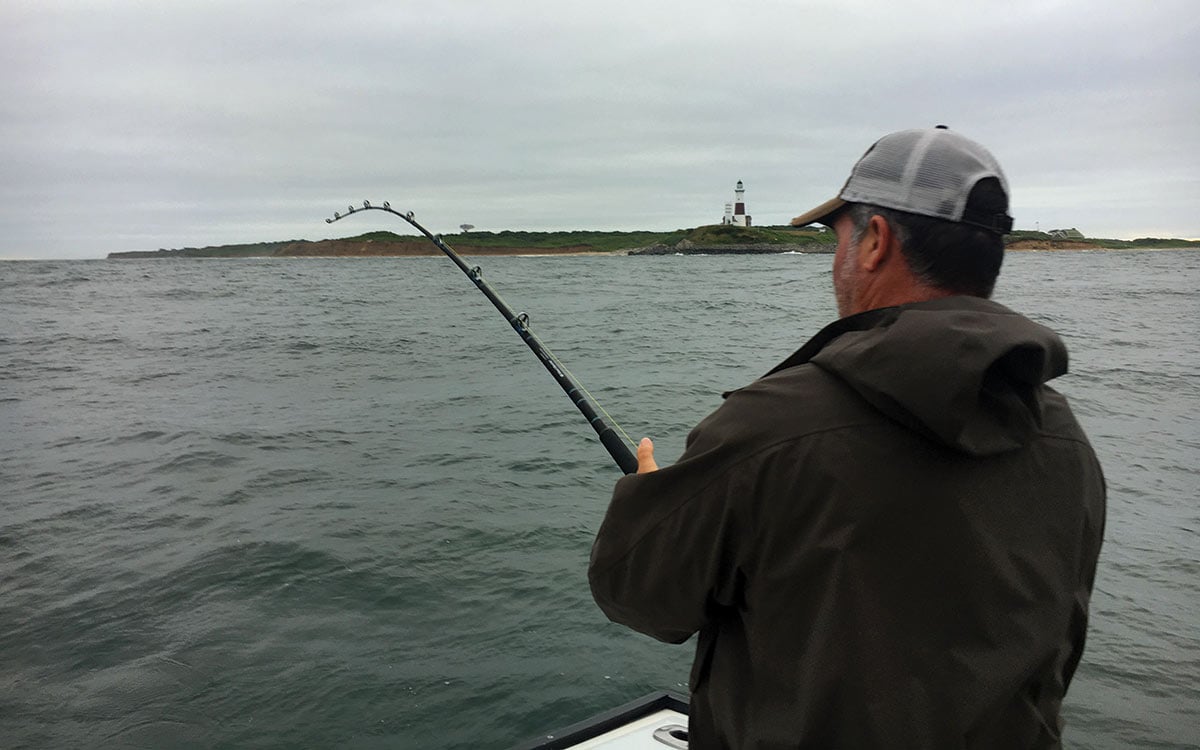
Presentation
When it comes to presenting your eel to a big striper, there are some things you should know that can make a big difference in whether you are successful or not. You are using live eels and it means exactly that—alive. Don’t beat the eel on the boat rail to “stun” it or do anything else to slow it down. Take a rag along with the liveliest eel you can find and hook it from the bottom of the mouth and out the top of the head as close to the nose as possible. Another important item is to slowly let your rig down to the bottom, but then reel it up a couple of cranks. Since the topography of the bottom in Montauk changes rapidly, you need to continually check, by letting the rig drop to the bottom and then immediately crank it up. If you drag the rig on the bottom, chances are good that you won’t feel a bite when you get one and will also lose plenty of rigs in the rocks. But, if your rig is off the bottom, you will definitely feel it when the bass hits. When you do, lower the rod tip and give the fish a few seconds to chew, then set the hook, or if you’re using a circle hook simply reel and in either case, hold on! I know this might seem like a great deal of work, but concentrating on where your rig is in relation to the bottom is critical.
Many large stripers are also pulled from Montauk’s rips by trolling tubes, bunker spoons, umbrella rigs or parachute jigs on either wire or braided line. This is my least favorite form of bass fishing, mainly because you are less involved in the catching, with the boat doing most of the work. The advantage of this method is that whoever is running the boat, whether it be a private or charter boat, can navigate along the edges of underwater structure where bass love to lie in wait. The other downside of trolling, especially with wire, is the work involved in cranking in 300 feet of wire with 20 or 30 pounds of bass at the other end and the boat still in gear. I consider that more work than fun, but some folks, especially those who have a difficult time developing the skill required for live baiting or diamond jigging, are just as content if it means scoring that big striper. Whether you fish your own boat, charter or party boats, mastering these techniques will make you more successful at the striper game when fishing Montauk’s striper rich waters.
